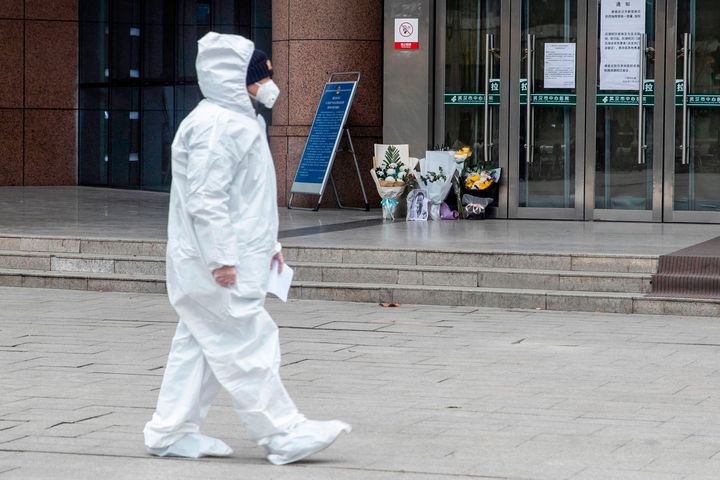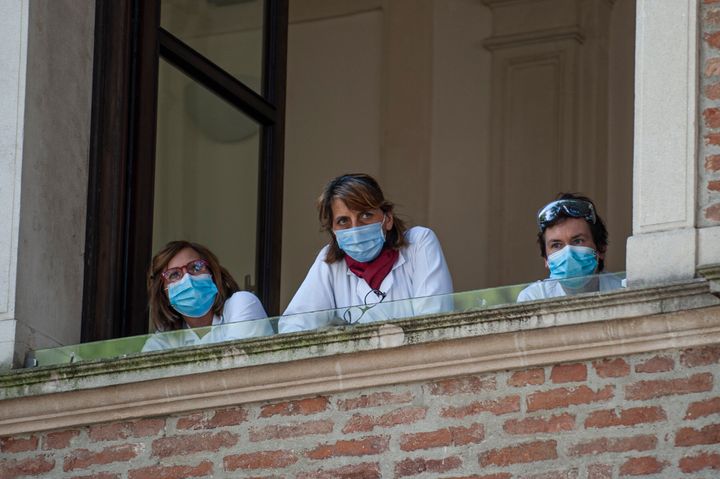Get the latest on coronavirus. Sign up to the Daily Brief for news, explainers, how-tos, opinion and more.
Self-isolate if you’ve visited Wuhan in the last fortnight. Don’t travel to infected areas at all. Don’t spent more than 15 minutes in close contact with someone who could be sick. Stay two metres – no, one metre, or should it be eight? – away from anyone infected. Actually, stay at home altogether.
Boris Johnson’s address to the nation on Sunday evening marks the latest change in the guidance for England about how to avoid catching coronavirus.
It is the first time the restrictions have been relaxed rather than tightened: people will be allowed to spend more time outdoors and may even see those outside their households in limited situations.
But how much of the government’s changing advice has been based on “the science”, as ministers are so fond of claiming?
We asked Dr Katrina Lythgoe, an expert in viral infections at Oxford University’s Nuffield Department of Medicine.
“The government is good at saying that we are following scientific advice,” she said. But what the government says and what it does don’t always match.
The two-week window
At the early stages of the outbreak, Britain was focused on preventing the spread of the virus from its origins in Wuhan, China, to the UK.
On January 27, the Foreign Office issued official advice that travellers who had returned from Wuhan in the last 14 days should self-isolate. A few days later, Britons who had been evacuated from Wuhan were placed in 14-day quarantine.

The focus on the two-week window was based on the scientific evidence that the incubation period before symptoms appeared could be as long as 14 days, according to Professor Mark Harris, a virology expert at the University of Leeds.
To prevent the spread of the disease, the goal was to restrict person-to-person contact.
“At this point, we are in a scenario where you can imagine individuals are travelling, they’re going to be starting new epidemics – what we call ‘sparks’,” said Lythgoe.
Two metres
At first, it wasn’t known how infectious the disease was. Then, in late February, public health officials gave a new warning: anyone who spent 15 minutes or longer within two metres of an infected person could also catch the virus.
The government advised people who’d had “close contact” with a person infected with Covid-19 to call the NHS 111 hotline. “Close contact” was defined as having been within two metres for 15 minutes or more.
The idea that two metres is a safe distance can be traced back to the 1930s, when scientists found that droplets of liquid from coughs or sneezes would either evaporate quickly or be dragged to the ground by gravity.
They concluded that the majority of the droplets would land within one to two metres.
The World Health Organisation recommends people stay at least a metre away from one another to avoid coronavirus, while the Australian government’s guidelines advise people to maintain a 1.5-metre distance.
But Lythgoe admits there was “a lot of uncertainty in all this”.
“It was based on the idea that most transmissions were happening via droplets,” she said. “We don’t know how far those droplets can travel.”
Because the coronavirus is spread in a similar way to the influenza virus, scientists had been using influenza as their main reference point.
In one study, healthcare workers within 1.8 metres of flu patients were at an increased risk of being infected.
Some studies, though, say two metres is not nearly enough to prevent coronavirus from spreading. One from Massachusetts Institute of Technology suggested the UK’s current two-metre rule needed to be at least four times bigger.
... eight metres?
It found that viral droplets could travel at speeds of up to 33 metres per second, creating a cloud that could span up to eight metres.
“It’s possible that they may travel much further,” said Lythgoe.
She added scientists are still unsure to what extent the coronavirus travels via coughs and sneezes rather than in an “aerosol” – a mist of tiny particles of breath that could potentially travel further than two metres.
If the virus can spread by aerosol, then the flow of wind from an infected person’s breath could potentially spread the coronavirus over longer distances.
By early March, it was clear among epidemiologists that the virus was spreading from person to person. Based on evidence from China, transmission seemed to be primarily through close contact.
A study by a team of official Chinese epidemiologists from Hunan province found the virus could linger in the air for at least 30 minutes and travel up to 4.5m.
Their findings contradicted the advice from health authorities around the world that a “safe distance” of one to two metres was enough to prevent the spread of the disease.

The introduction of social distancing in the UK came on March 6, and marked the moment at which the UK moved from the “contain” to the “delay” of its “contain, delay and mitigate” action plan.
As the government intensified efforts to bring the disease under control, it was clear that the priority was to reduce transmission. But there were also fears of public “fatigue”, meaning restrictions designed to reduce the spread of coronavirus were delayed until the last possible minute.
While the government was behind doors discussing whether to try to reduce the “peak” of the epidemic curve by building up herd immunity or whether to introduce a lockdown, UK scientists were becoming increasingly alarmed at the data coming from Europe.
Figures from Wuhan had suggested that, unless it was under control, the epidemic could double every five days.
But from the new data coming from European countries hit first by the virus – Italy and, to a lesser extent, Spain – it became clear that the epidemic was doubling not every five days, but every three.
As Lythgoe puts it, the UK was facing only two options.
“The first option was to have a lockdown, which would protect the NHS and save a lot of lives,” she said.
“The other was to not have a lockdown, which would overwhelm the NHS and lead to a huge number of deaths.“
Today, workers in England who cannot work from home are being encouraged to think about a return to work. And there are mounting concerns over what safety measures will be put into place by companies to allow employees to return to their workplaces.

Trade unions have raised questions over the lack of public scientific guidance on what circumstances make physical barriers such as screens as effective as physical distancing.
Last week, defence secretary Ben Wallace suggested protective equipment could be used to prevent the spread of the virus, in order to allow people to go back to work.
His comments were quickly criticised by the government’s chief scientific adviser, Sir Patrick Vallance.
“The risk at one metre is about 10 to 30 times higher than the risk at two metres,” he told the health select committee on Tuesday.
“This gives you an idea of why the two-metre rule becomes important.”
There have also been demands that the government demonstrate scientific evidence to support Public Health England’s advice that the risk of contracting coronavirus is lower if interactions are limited to 15 minutes as it hasn’t officially been redacted: it still applies, for instance, in the government’s guidance for the construction industry.

